岡山県総社市に位置する古代山城「鬼ノ城(きのじょう)」は、「日本100名城」のひとつで、大和朝廷によって7世紀後半に築かれた防衛拠点だと考えられています。現在は城跡の調査や整備が行われており、復元された西門からは素晴らしいパノラマ風景が楽しめます。また、鬼ノ城ビジターセンターでは遺跡の展示や復元の過程が紹介されています。山頂一帯には城壁が約2.8kmにわたって鉢巻状に取り囲んでおり、歩いて一周できるウォーキングコースも整備されています。鬼ノ城は日本の古代山城の中でも完成度が高く、瀬戸内海や周辺の景色を楽しむことができます。また、桃太郎伝説の舞台としても知られ、日本遺産に登録されています。
The ancient mountain castle of Kinojo, located in Soja City, Okayama Prefecture, is one of the ‘100 Great Castles of Japan’ and is thought to have been a defence base built by the Yamato Imperial Court in the late 7th century. The ruins of the castle are currently being surveyed and maintained, and the restored west gate offers a wonderful panoramic view. The Onino Castle Visitor Centre also displays the ruins and introduces the restoration process. The castle walls surround the summit of the mountain in a 2.8 km bowl, and there is a walking course that takes you around the castle on foot. Onino Castle is one of the most complete ancient mountain castles in Japan, and the views of the Seto Inland Sea and the surrounding area can be enjoyed. It is also known as the setting of the legend of Momotaro and is registered as a Japanese Heritage Site.
鬼ノ城(きのじょう)
住所:岡山県総社市黒尾 [Google Map]
駐車場:無料 30台
指定:国の史跡「鬼城山」、日本100名城(日本城郭協会)、日本遺産(「桃太郎伝説」の生まれたまち おかやま)
鬼城山ビジターセンター:8:30~17:00 / 月曜定休(祝日の場合は翌日)
Ki castle (Ki no jō)
Address: Kuroo, Soja City, Okayama Prefecture [Google Map]
Parking: Free of charge 30 cars
Designation: National Historic Site “Mt. Kinojo-san”, one of the 100 best castles in Japan (Japan Castle Association), Japanese Heritage (Okayama, the birthplace of the “Momotaro legend”).
Onijozan Visitor Centre: 8:30-17:00 / Closed on Mondays (or the following day if Monday is a bank holiday).
2023年06月04日撮影
遠く、香川県高松市の屋島も見えます。
鬼城山(きのじょうさん)案内図
角楼跡(かくろうあと)。日本の古代山城では、初めて具体的に確認された特殊な施設です。中国の城郭でいう「馬面(ばめん)」、朝鮮半島での「雉(ち)」にあたります。ここは、尾根つづきで攻められやすいため、城壁の死角を補い防御力を高めることを目的として、城壁の一部を長方形(13x4m)に張り出しています。角楼の下半部は、両側の石垣と同じように石垣積みで、ほぼ4m間隔で一辺50cmの6本の角柱が石垣の間に建っていたことがわかりました。また城内側には、この施設への昇降のための石段も設けられています。しかし、この上に建物などがあったかどうかは不明です。最高所の鬼城山・西門と一体となって、強固な防御領域を形成しています。
きのこ
西門跡。鬼ノ城は、四ヶ所に城門を設けています。いずれも堀立柱(ほったてばしら)の城門で、通路床面に大きな石を敷き、床面と城門前面に2m近い段差を持つ(懸門)ことを特徴としています。西門は、南門と同規模の大型の城門で間口3間(12.3m)、中央1間を通路とし、2間の奥行きをもち、12本の柱で上屋(うわや)を支えます。柱は一辺最大60cmの角柱を2mほども埋め込んでいます。本柱に合わせたくり込み、方立(ほうだて)柱穴、軸摺(じくすり)穴、蹴放(けはな)しが一体的に加工された門礎をもつのは、鬼ノ城ののみです。西門は日本最大の古代山城、大野城の太宰府口(だざいふぐち)城門(間口8.85m)をしのぐ、壮大堅固な城門です。
西門の復元。西門跡は、きわめて良好な状態で残っていました。12本の柱の位置と太さ、埋め込まれた深さ、各柱間の寸法も正確に知ることができ、また通路床面の石敷や石段、敷石もよく残っていたので、城門の規模と構造を具体的に知ることができました。そこでこれらの資料をもとに、関連資料を参考にし、戦闘の場としての機能を考慮して三階建ての城門に復元しています。一階は通路、二階は城壁上の連絡路、三階は見張りや戦闘の場としての機能をもつものです。屋根は調査時にも瓦は出士していないので、板茸きにしています。古代山城の城門の復元例としては、日本初の事例です。
城壁。鬼ノ城は、頂上部から斜面に変わるあたりに鉢巻をしめたように 2.8km にわたって城壁が築かれています。 城壁は直線を基本とし、多少の高低差はあるものの、下幅約7m、上幅約6m、高さ約6mの規模をもち、城壁で囲まれた城内面積は約30haに及ぶ広大さです。 城壁の大部分は、 土を少しずつ入れて 突き固めた「版築土塁(はんちくどるい)」で、要所の6ヶ所には高い石垣を築いていますが、基本的には土城です。 また城壁の上面には板塀が巡らされており、城壁の高さと一体となって攻路の難しい一大防御壁となっています。 ここには版築土塁・高石垣・水門があり、城壁の特徴をよく示している区間です。
神籠石(こうごいし)状列石。長さ11.6m。神籠石式山城(こうごいししきやまじろ)は、九州地方から瀬戸内地方にある、石垣で区画した列石遺跡の総称。一般には『日本書紀』や『続日本紀』に記載がなく遺構でのみ存在が確認される山城を指します。
敷石。鬼ノ城では、城壁の下の面に接して板石を多数敷きつめています。幅は基本的に1.5 m幅で、城内側の広い所では5m幅にもなる所もあります。 敷石は多くの区間に敷かれており、総重量は数千トンにもなります。 この石畳のような石は、通路としての役わりもあるものの、敷石の傾斜などからみて、もともとは雨水等が城壁を壊すのを防ぐことを目的としたものと考えられます。 敷石は、日本の古代山城では鬼ノ城にしかなく、朝鮮半島でも数例知られるだけの珍しいものです。 とくにこの区間の敷石は、鬼ノ城でも見事なところです。
ツツジ
ここ吉備地方には、大和朝廷が派遣した吉備津彦命(きびつひこのみこと)が人々を苦しめた鬼神 、温羅(うら)を退治した伝説が残り、昔話「桃太郎」の原型になったとされています。 伝説では、鬼ノ城は温羅の居城とされ、吉備津神社や吉備津彦神社のある「吉備の中山」に陣を構える吉備津彦命と、弓矢などで戦いました。 標高約400mのこの城は7世紀後半に築かれ、山頂の平坦地を石垣や土を突き固めた土塁が約2.8kmに渡って囲んでいました。築城当時は、南方面に海が広がっていたと考えられ、遠くに船が行き交う様子を見ることができたと思われます。近隣には、温羅が生費(いけにえ)を茹でたといわれる鬼の釜など、伝説ゆかりの地が多くあります。
There is a legend in the Kibi area that tells of how a prince of ancient Japan named Kibitsuhiko-no-Mikoto vanquished an ogre god (also known as Ura) who tormented the people. This legend is thought to be the model for the famous Japanese fairytale Momotaro.
In the legend, Kinojo Castle was Ura’s residence; it is said that he used weapons such as a bow and arrows to fight Kibitsuhiko-no-Mikoto, who stood on Kibi no Nakayama mountain 10 km southeast of Kinojo Castle. This castle stands around 400 m above sea level and was constructed in the second half of the seventh century. Stone walls and earthworks with tamped-down soil surrounded the flat area at the top on the mountain, stretching across a distance of around 2.8 km. You can see sweeping views from the peak, and the sea once extended to the south.
Ki castle (鬼ノ城, Ki no jō) was an ancient kōgoishi type castle (also known as a Korean-style fortresses in Japan (朝鮮式山城, Chōsen-shiki yamajiro) located in the city of Sōja, Okayama Prefecture, Japan. Its ruins have been protected as a National Historic Site since 1986. Portions of the castle were reconstructed in the early 2000s.
Legend
The castle’s name literally means “demon castle” (ki is another reading for the character for oni); according to a traditional fable, a demon named Onra or Ura once ruled Kibi Province from the castle. The castle is the basis of the myth that is associated with the folklore hero, Momotarō. The legendary story of Kibitsuhiko-no-mikoto and Ura explains that the Prince Ura of Kudara used to live in Ki-no-jo (castle of the devil) and was a cause of trouble for the people living in the village. The emperor’s government sent Kibitsuhiko-no-mikoto (Momotarō) to defeat Ura.However, “Ki means “castle in the ancient language of Baekje, and was later simply assigned the kanji character for “demon. “Ki-no-jō” is a name that combines the two words for “castle”.History
After the defeat of the combined Baekje and Yamato Japan forces, at the hands of the Silla and Tang China alliance at the Battle of Hakusukinoe in 663, the Yamato court feared an invasion from either or both Tang or Silla. In response, Emperor Tenji ordered the construction of a huge network of shore fortifications throughout the rest of the 600s, often with the assistance of Baekje engineers, generals and artisans. Unaware of the outbreak of the Silla-Tang War (670–676), the Japanese would continue to build fortifications until 701, after finding out that Silla was no longer friendly with Tang. According to the Nihonshoki, twelve Korean-style mountain fortifications were built in western Japan at this time, and it is believed that Ki castle was one of them. The identification of particular sites with the fortresses constructed at this time remains a subject of debate, and most fortifications of this period are classified under the wider term kōgoishi (神籠石).
その歴史がいまだ解明されていない謎の山城
「日本100名城」のひとつ。大和朝廷によって国の防衛のために築かれたとされる古代山城。鬼ノ城は歴史書には一切記されておらず、その歴史は解明されずに謎のままです。現在は史跡調査や整備、復元を行っており、角楼跡や城門跡を訪れることができます。復元された西門から望むパノラマ風景は素晴らしい。山頂の手前には復元の過程や遺跡が出土した時の様子を紹介した「総社市鬼ノ城ビジターセンター」があります。城壁に沿って整備された全長2.8kmのウォーキングコースもおすすめです。
鬼ノ城は、古代の正規の歴史書には登場しないが、後世の文献である鬼ノ城縁起などにでてくる。それによると「異国の鬼神が吉備国にやって来た。彼は百済の王子で名を温羅(うら)という。彼はやがて備中国の新山(にいやま)に居城を構え、しばしば西国から都へ送る物資を奪ったり、婦女子を掠奪したので、人々は恐れおののいて「鬼ノ城」と呼び、都へ行ってその暴状を訴えた・・・」。これが、一般に温羅伝承と呼ばれる説話で、地名もこれに由来している。
鬼ノ城は、すり鉢を伏せたような形の山で、斜面は急峻だが頂部は平坦である。この山の八合目から九合目にかけて、城壁が2.8kmにわたって鉢巻状に巡っている。城壁は、一段一列に並べ置いた列石の上に、土を少しづつ入れてつき固めた版築土塁で、平均幅約7m、推定高は約6mもある。要所には堅固な高い石垣を築いており、その威圧感は天然要害の地であることとあわせ、圧倒的な迫力をもっている。このように、版築土塁や高い石垣で築かれた城壁は、数m~数十mの直線を単位とし、地形に応じて城内外へ「折れ」ていることに特徴がある。城壁で囲まれた城内は比較的平坦で約30ヘクタールという広大なもので、4つの谷を含んでいるため、谷部には排水の必要から水門が6ヶ所に設けられており、また、出入り口となる城門が4ヶ所にある。城内には、食品貯蔵庫と考えられる礎石建物跡やのろし場、溜井(水汲み場)もある。この他に城内には貯水池とみられる湿地が数ヶ所ある。さらに兵舎、各種の作業場なども予測されるが未発見である。

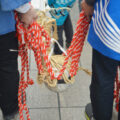
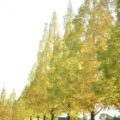
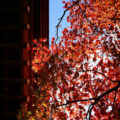
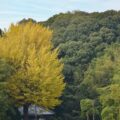



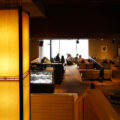
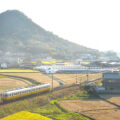
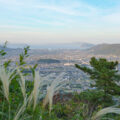
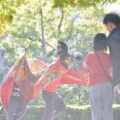
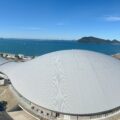
![【高知】魚を守る道、アイスハーバー型らせん魚道 – [Kochi] Ice Harbor type spiral fishway](https://yousakana.jp/wp-content/uploads/wordpress-popular-posts/50244-featured-120x120.jpeg)
![【香川】高松の素敵な本屋まとめ - [Kagawa] Wonderful book shops at Takamatsu city](https://yousakana.jp/wp-content/uploads/wordpress-popular-posts/43920-featured-120x120.jpg)
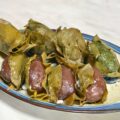
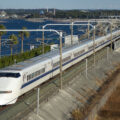

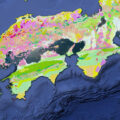
![【香川】春日川の川市 – [Kagawa] River market of Kasuga river](https://yousakana.jp/wp-content/uploads/wordpress-popular-posts/49605-featured-120x120.jpeg)
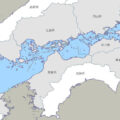
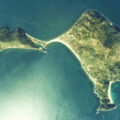
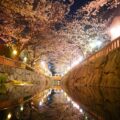
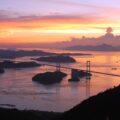
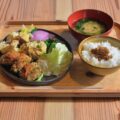
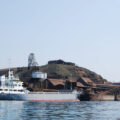
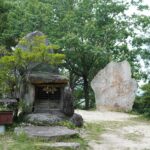
![【岡山】市庁舎から美術館へ。丹下建築から浦辺鎮太郎から受け継ぐ倉敷の名建築『倉敷市立美術館』 – [Okayama] The Kurashiki Municipal Museum of Art](https://yousakana.jp/wp-content/uploads/2025/08/panorama_kurashiki-city-museum_11-150x150.jpg)
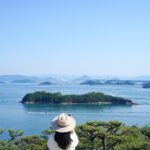
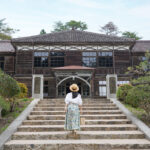
![【岡山 2026年3月下旬公開予定】国宝『山鳥毛』 – [Okayama Scheduled for release in late March 2026] National Treasure “Sanchōmō”](https://yousakana.jp/wp-content/uploads/2024/08/sanchomo_title-150x150.jpg)
![【日本名木百選、岡山県天然記念物】高台にそびえる大きな一本桜、醍醐桜 – [Okayama] Daigo cherry tree](https://yousakana.jp/wp-content/uploads/2023/03/panorama_daigo-sakura-150x150.jpeg)
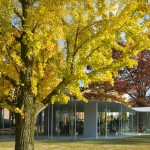

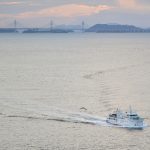
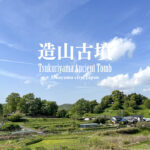
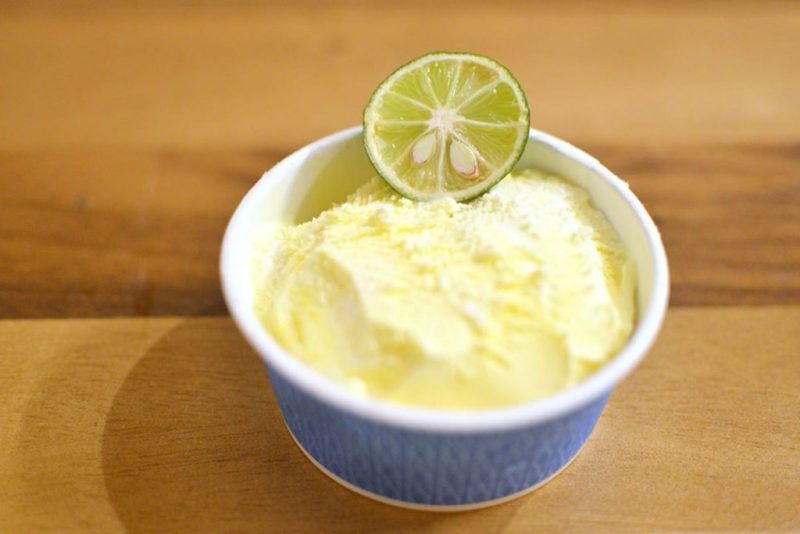
![【徳島 3月下旬~5月末迄】鯉のぼり 秘境大歩危峡を泳ぐ – [Tokushima March-May]The carp streamers of Iya valley](https://yousakana.jp/wp-content/uploads/2018/05/iya-koinobori-800x536.jpg)
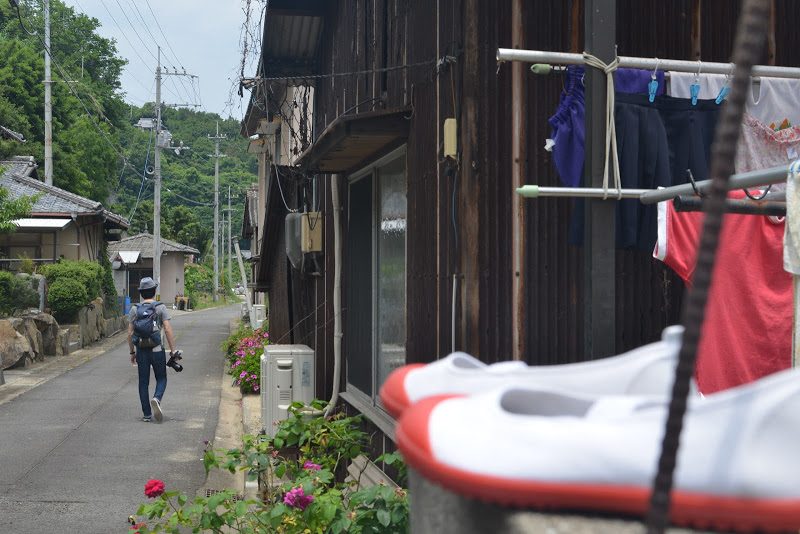
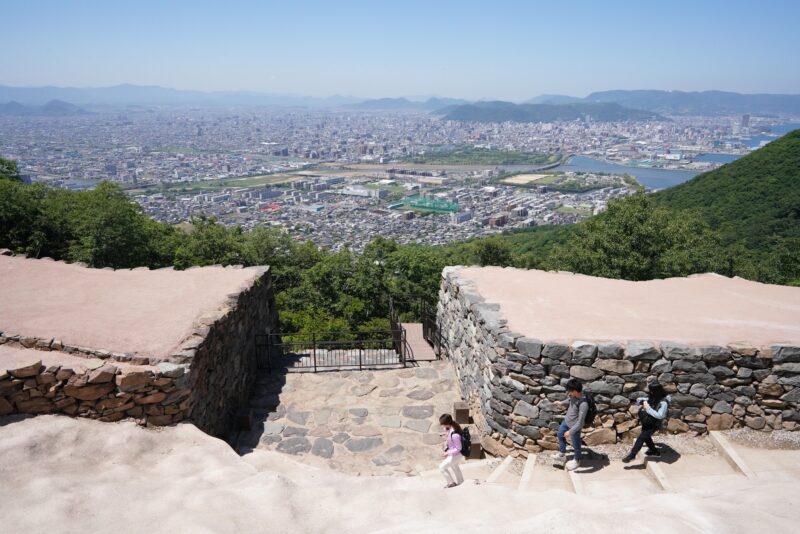
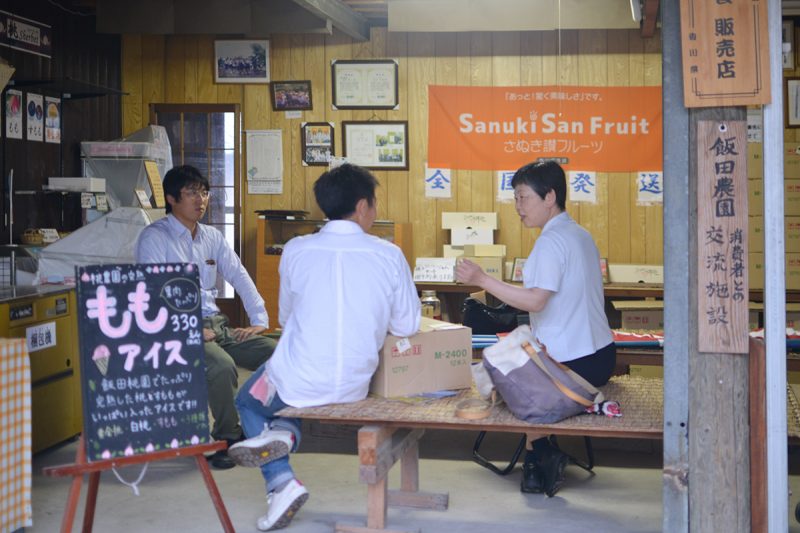
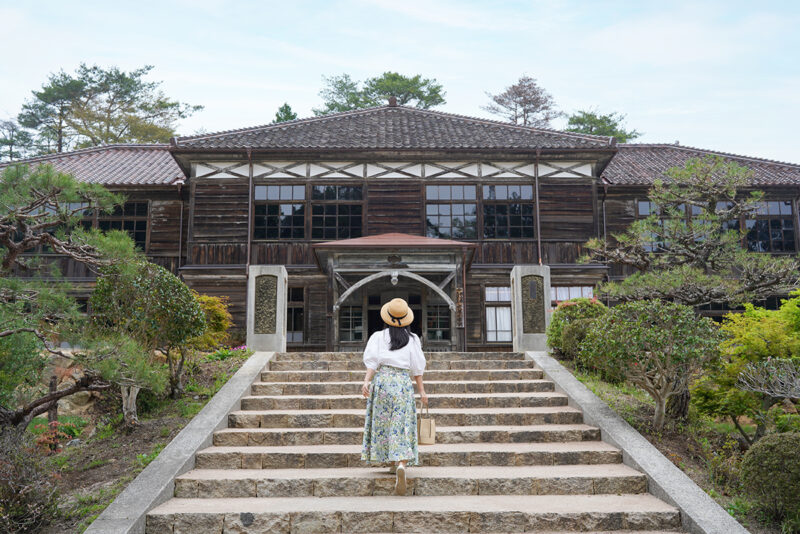
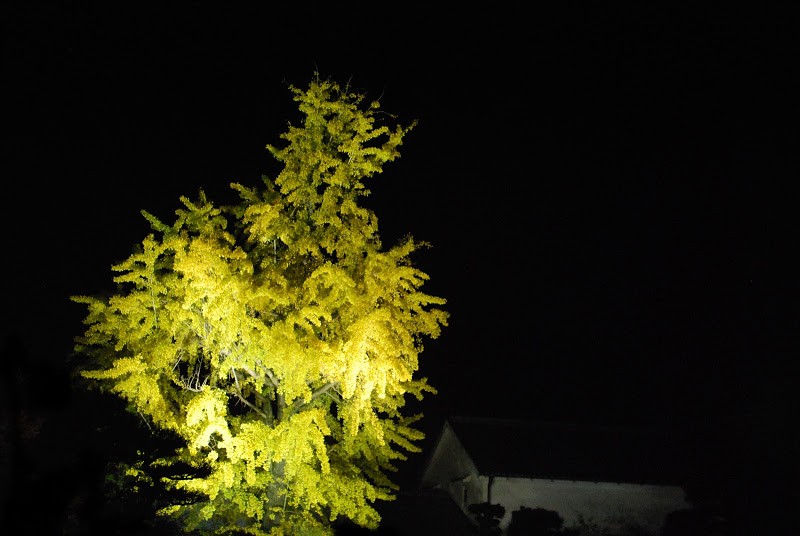
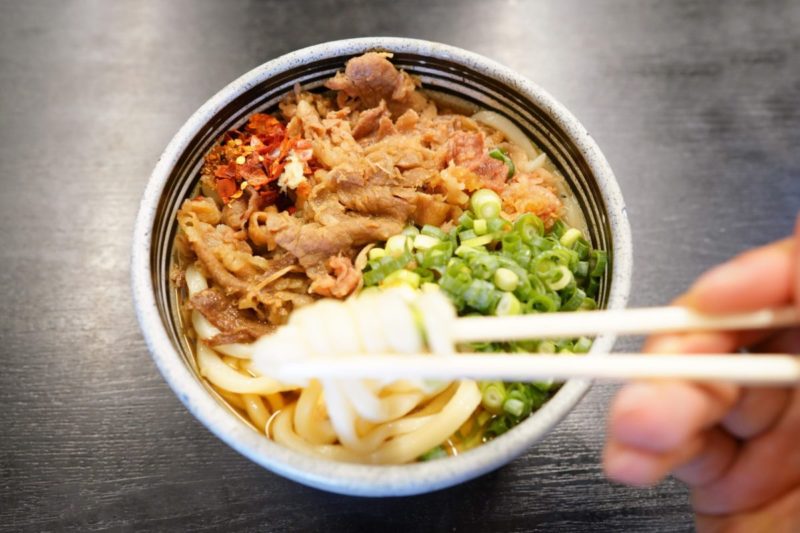
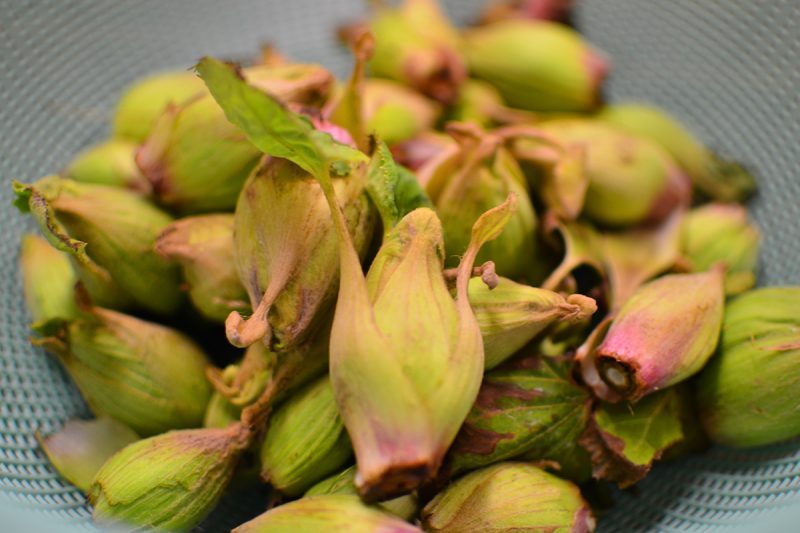
![【高知】日本の桜名所100選。植物学者・牧野富太郎さんの故郷にある『牧野公園』 – [Kochi] “Makino Park”, Botanist Tomitaro Makino](https://yousakana.jp/wp-content/uploads/2022/02/panorama_makino-park_sakura-800x533.jpg)
![【徳島】阿波國一の宮 大麻比古神社 – [Tokushima] Ōasahiko Shrine](https://yousakana.jp/wp-content/uploads/2020/07/3671179fbb08245509a7ad0a96668624-800x534.jpg)
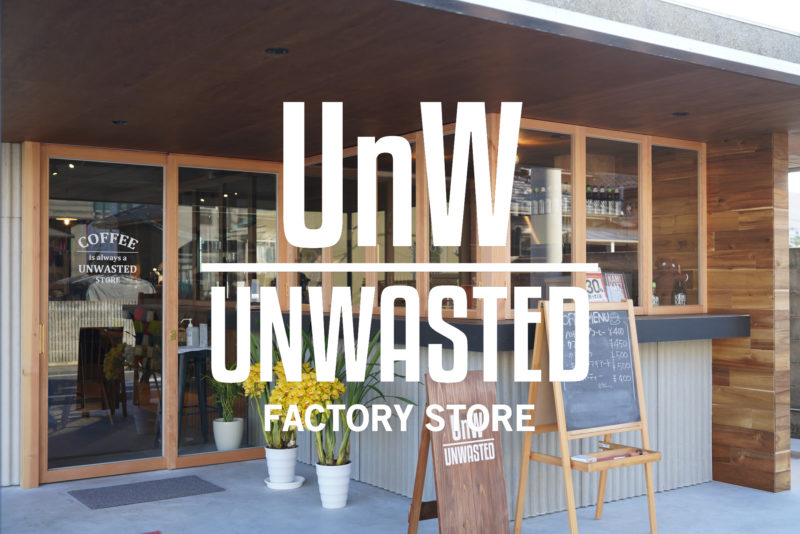
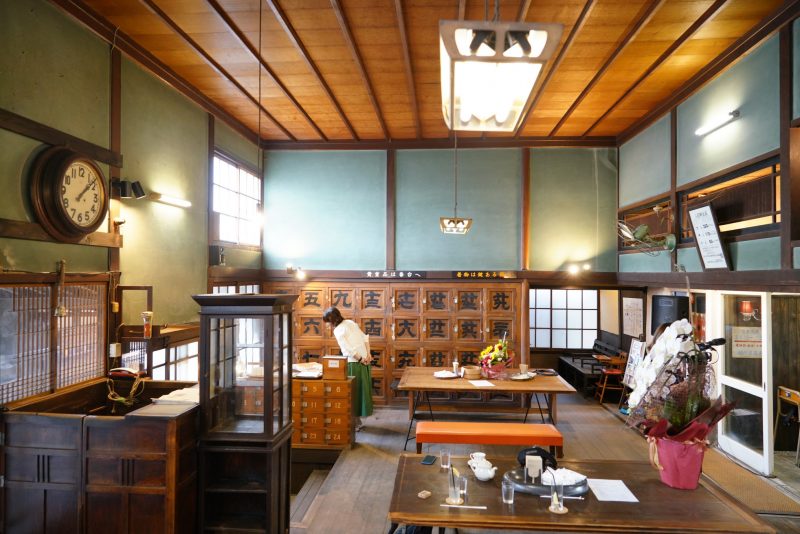
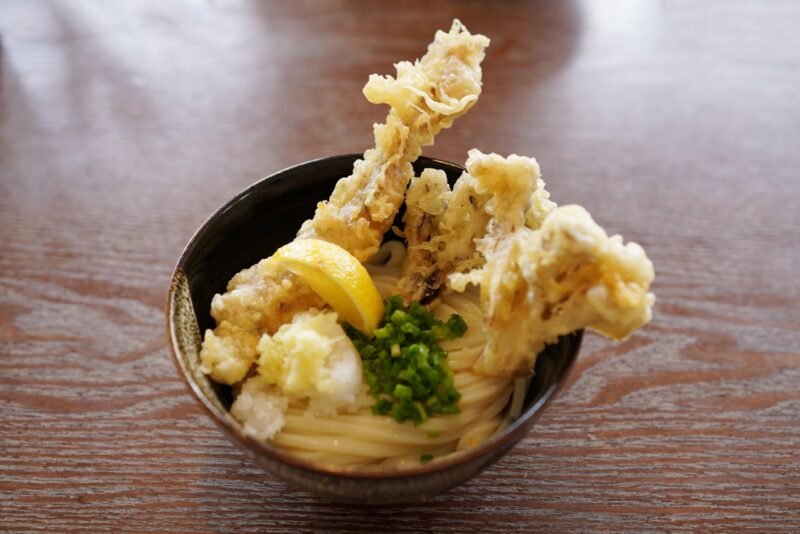
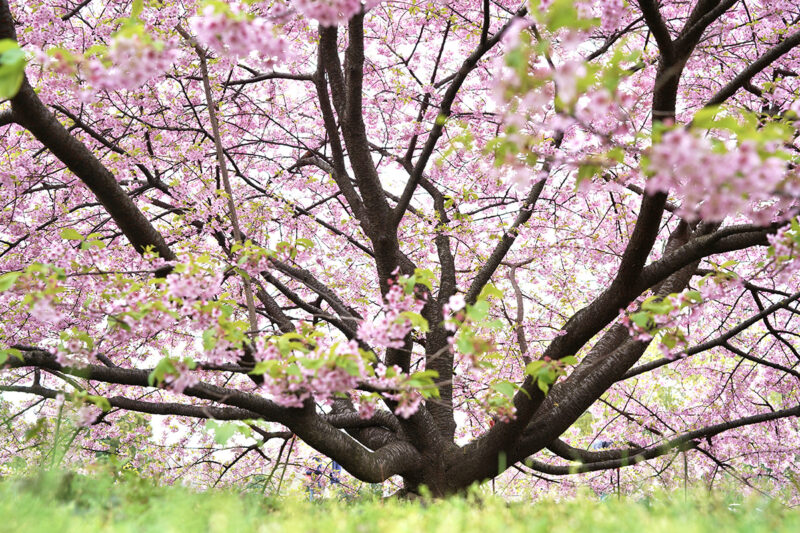
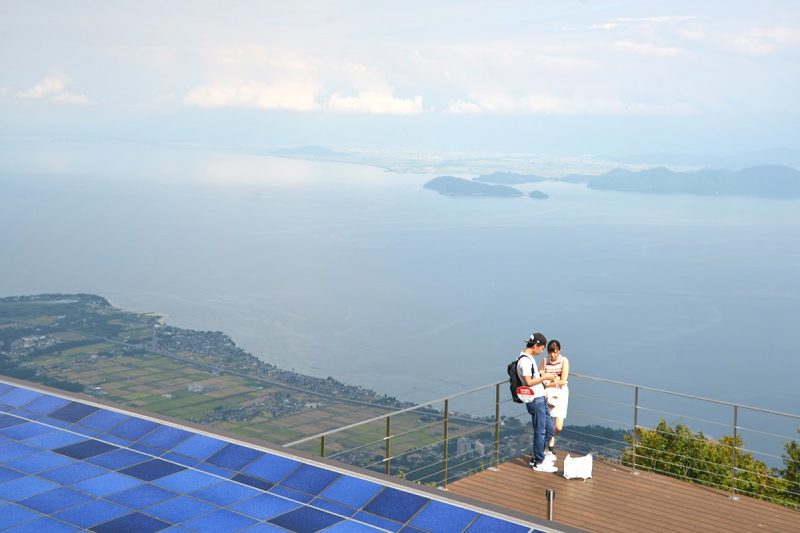
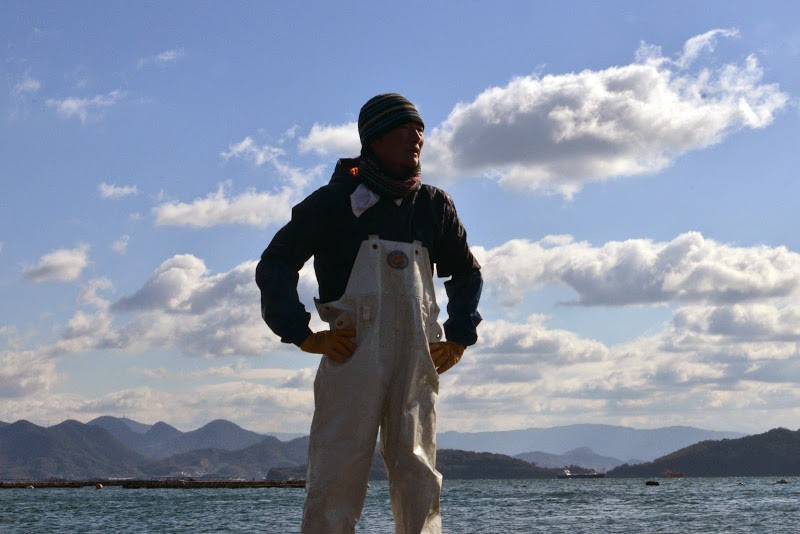
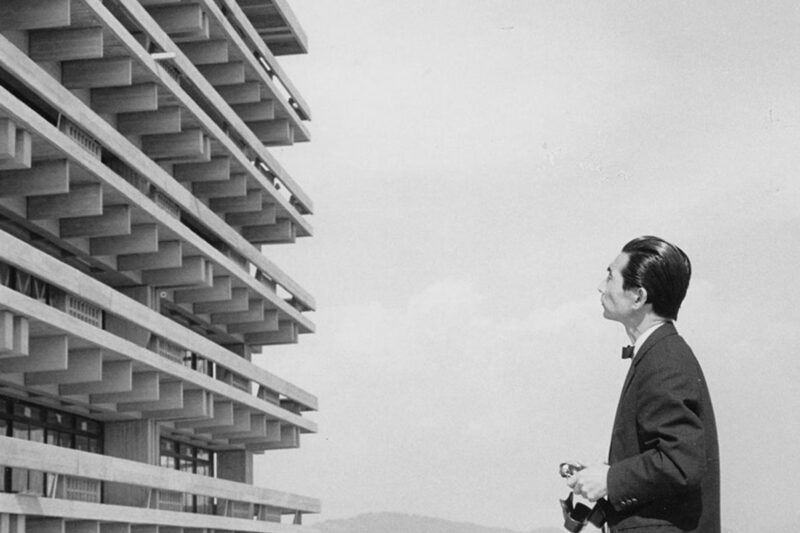
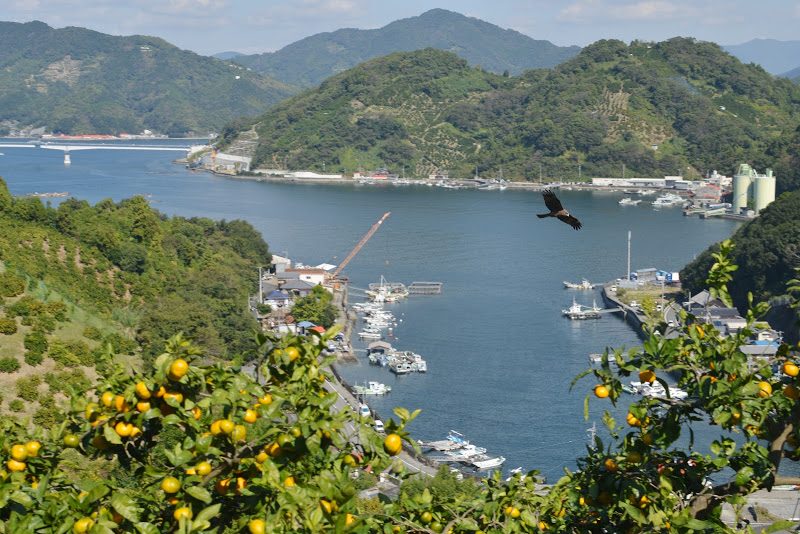
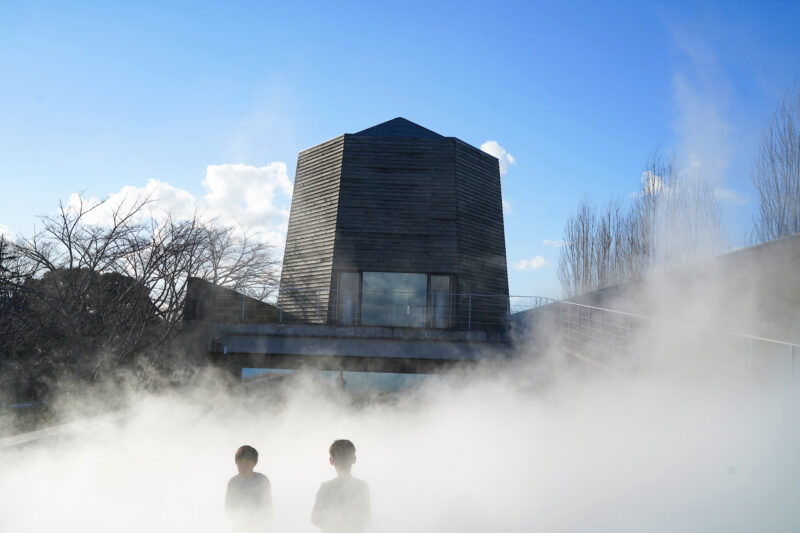
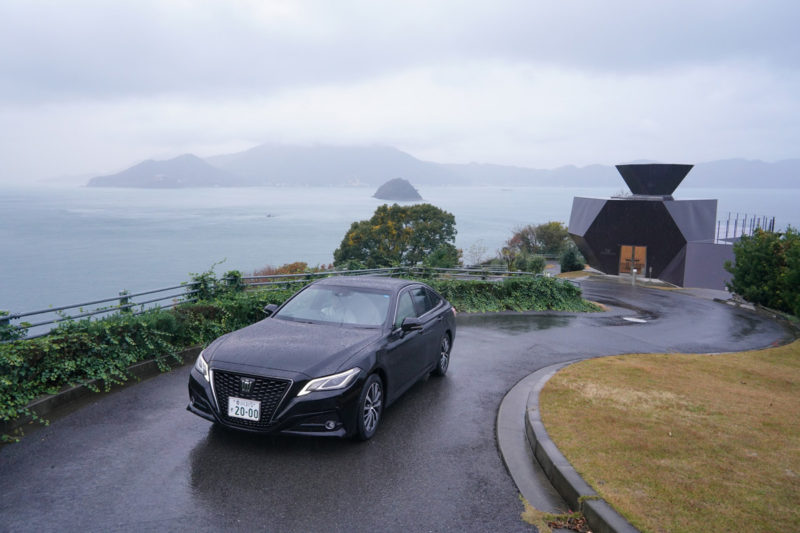
![【高知】「何不(なぜしないのか)」日本最古級の文章が出土か『若宮ノ東遺跡』 – [Kochi] ‘Why not?’ Japan’s oldest writing discovered at Wakamiya-no-Higashi Ruins](https://yousakana.jp/wp-content/uploads/2025/07/wakamiyanohigashi-ruin_kochi-800x533.jpg)
![日本最古の石積式マルチプルアーチダム 国指定重要文化財 豊稔池ダム – [Kagawa] Tail water of Hōnenike Dam](https://yousakana.jp/wp-content/uploads/2015/09/DSC_0023-800x532.jpg)
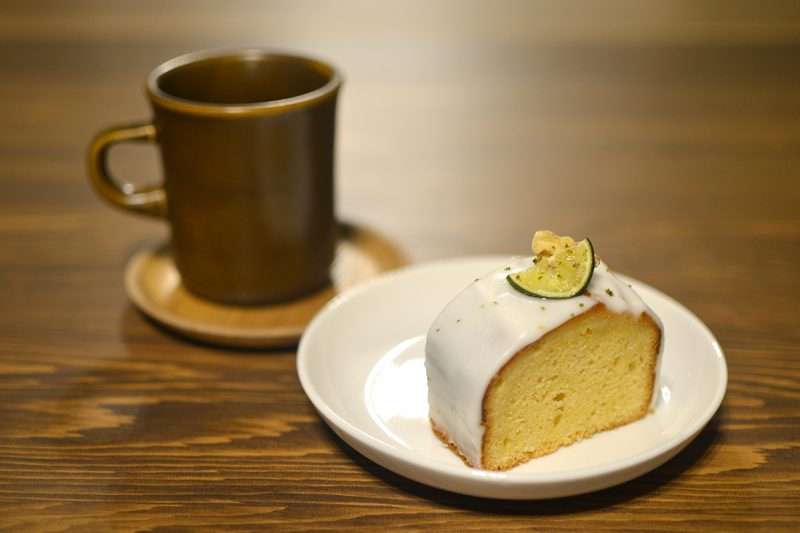
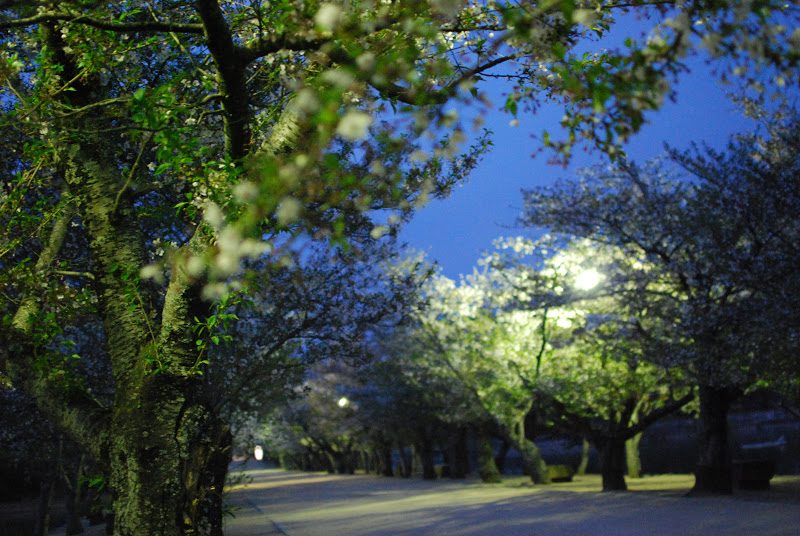
![【全国初 泊まれる城】大洲城 – [Ehime] You can stay Ozu Castle](https://yousakana.jp/wp-content/uploads/2020/07/Ozu-Castle-800x533.jpg)
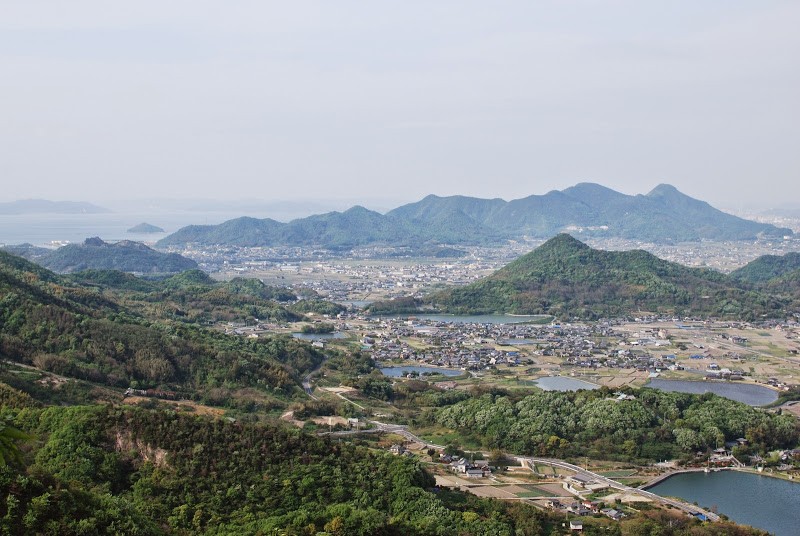
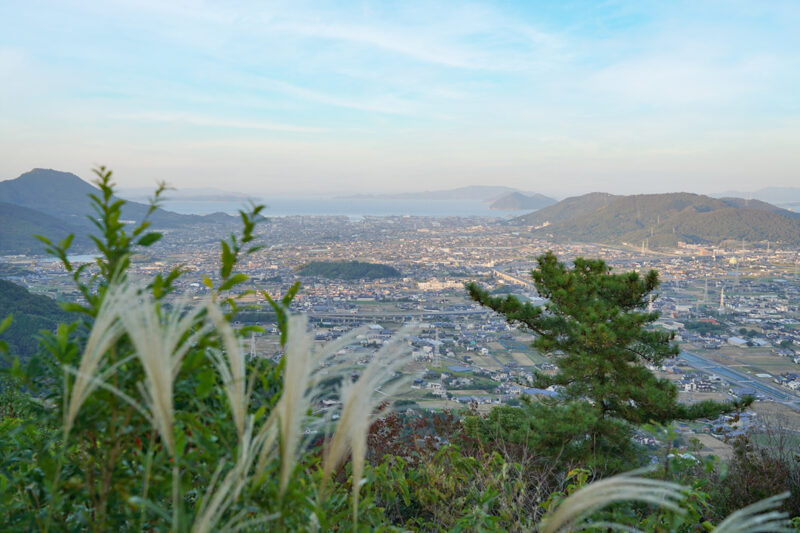
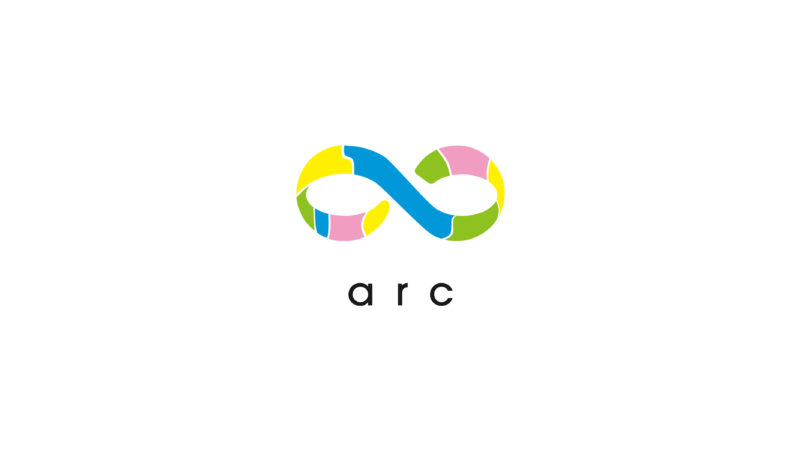
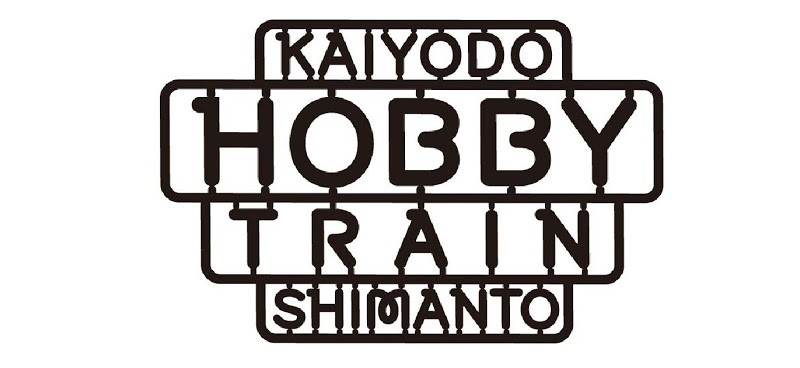
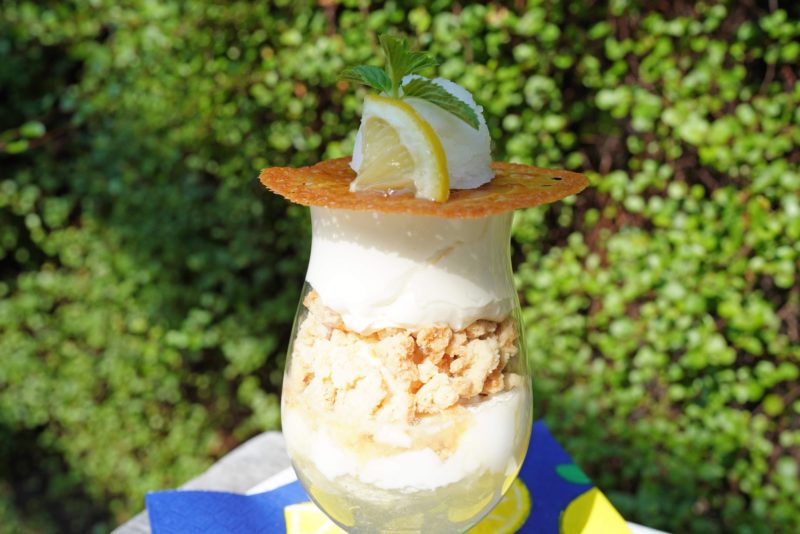
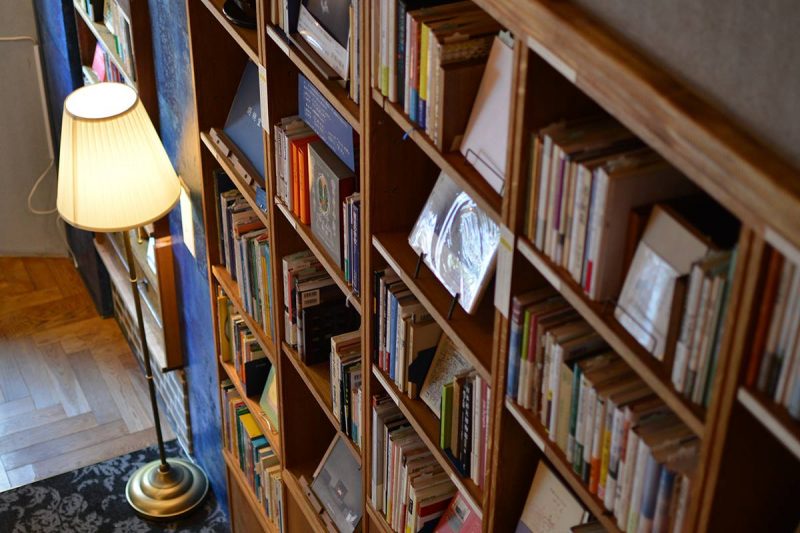
![【高知】おやつの神さまが集まるイベント「おやつ神社」 – [Kochi] OYATSU JINJYA(Shrine)](https://yousakana.jp/wp-content/uploads/2017/10/oyatsu-shrine-800x534.jpg)
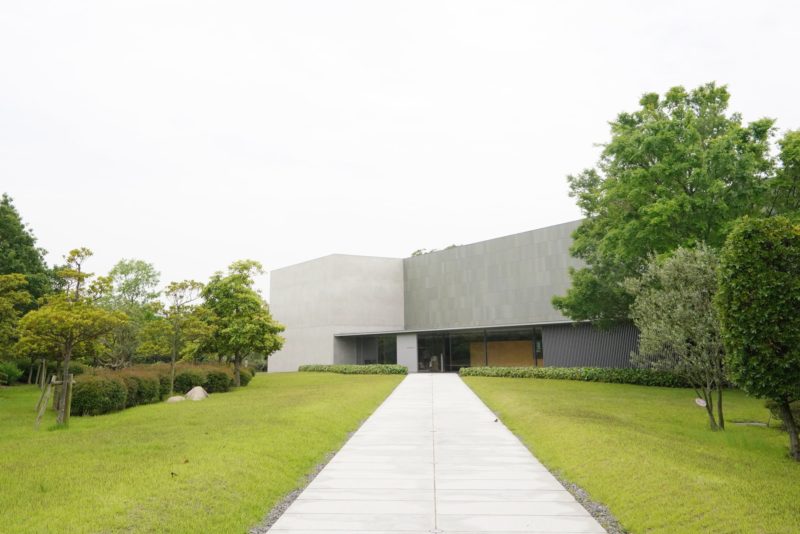
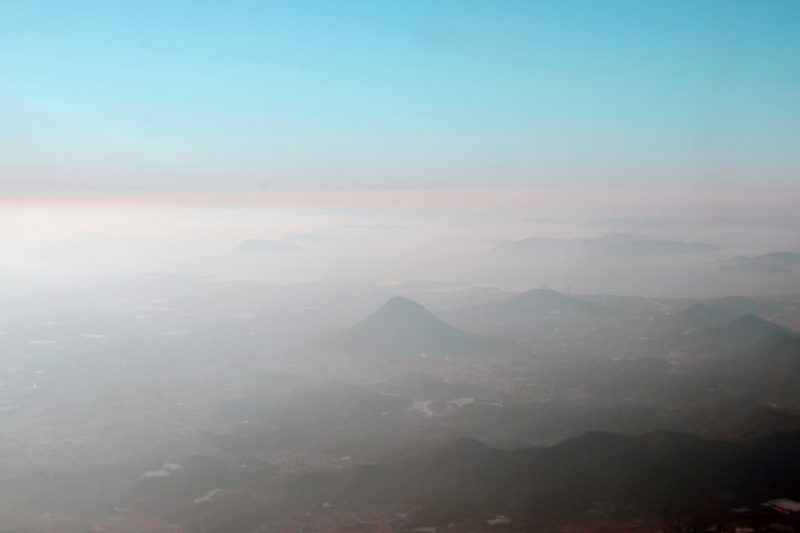
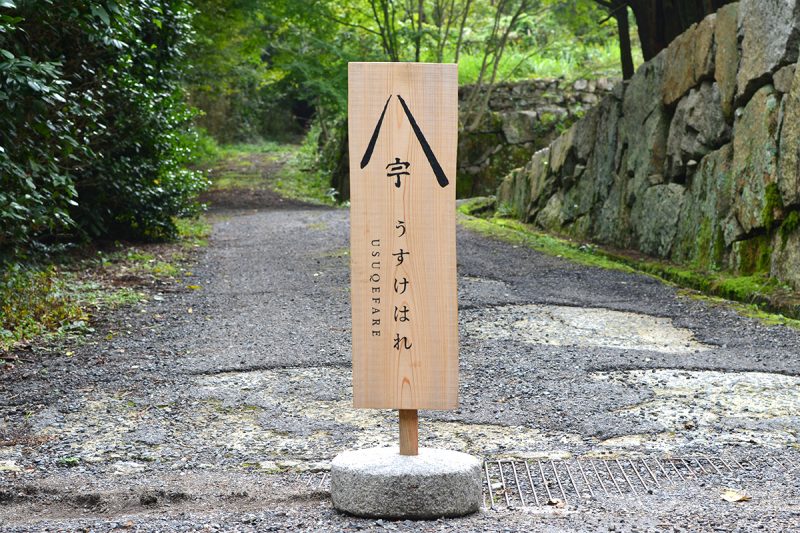
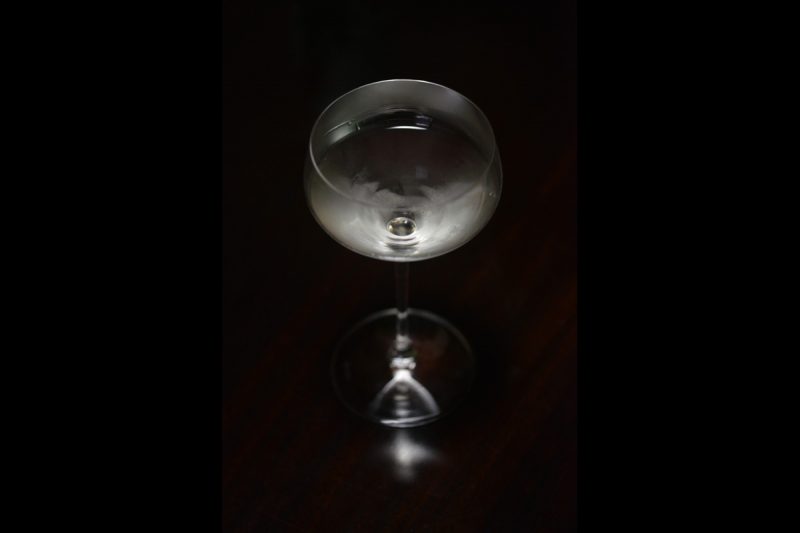
![【徳島 6/1(土)一般公開】全国唯一。江戸時代の塩づくりの家『福永家(ふくながけ)』 – [Tokushima] “Fukunagake” Saltworker’s Residence](https://yousakana.jp/wp-content/uploads/2022/10/fukunagake_naruto-800x534.jpeg)
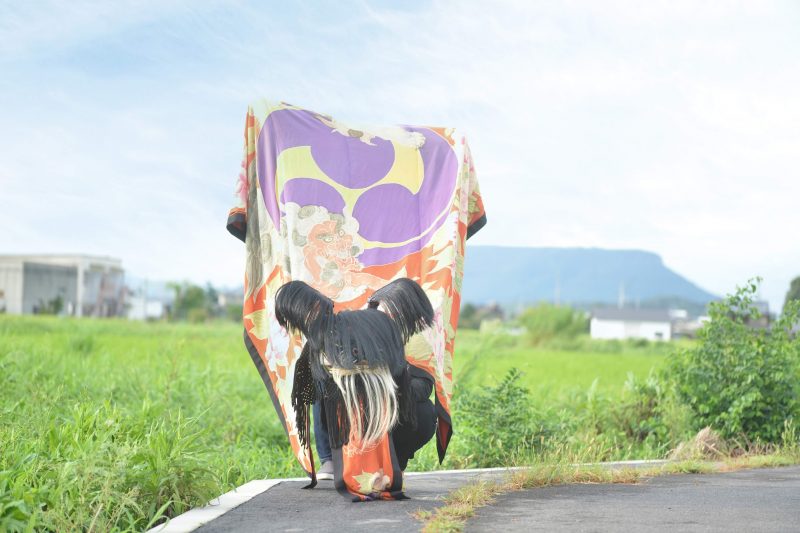
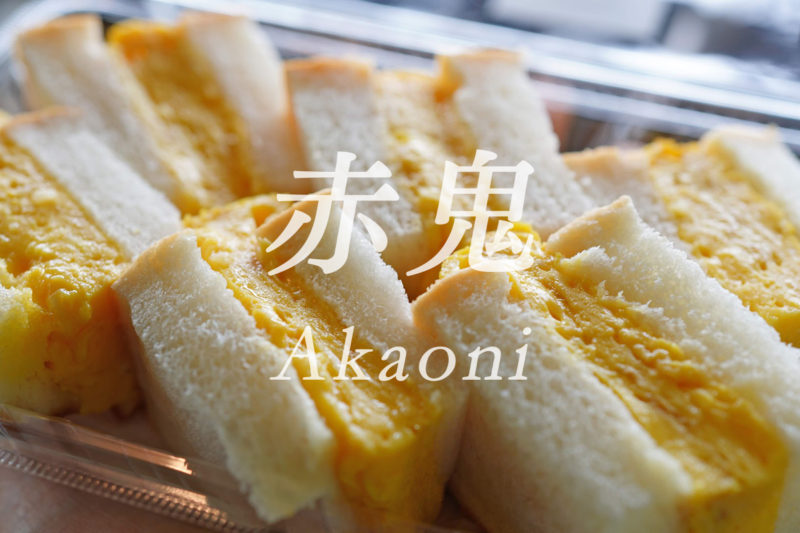
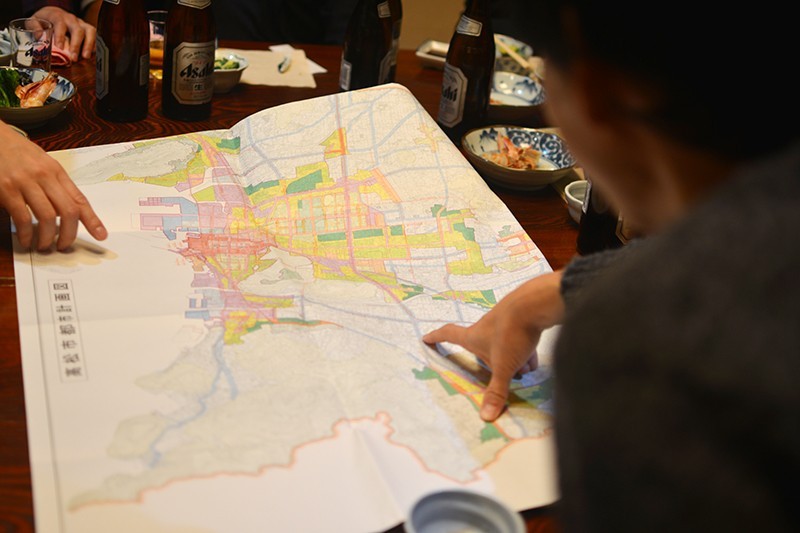
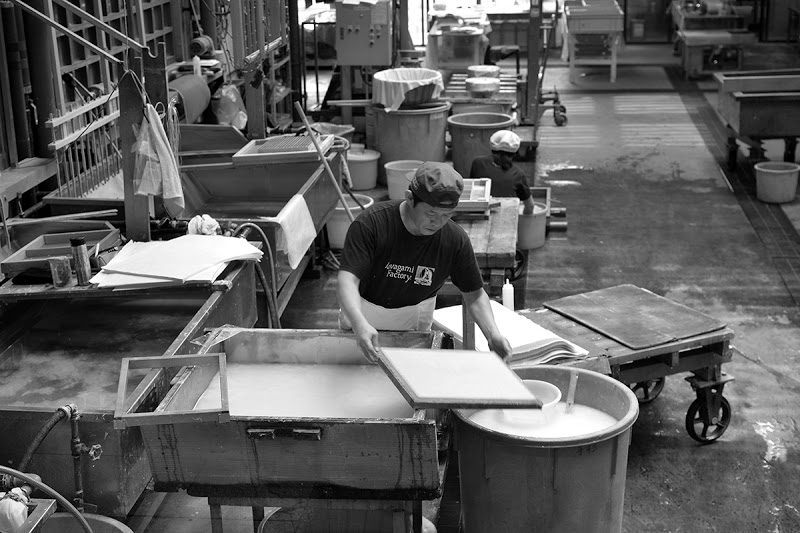
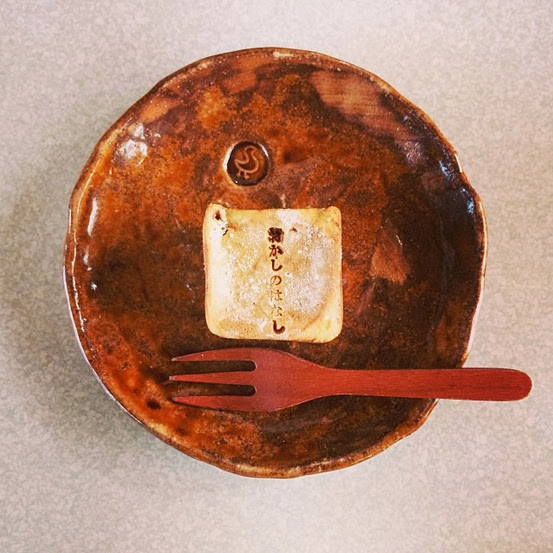
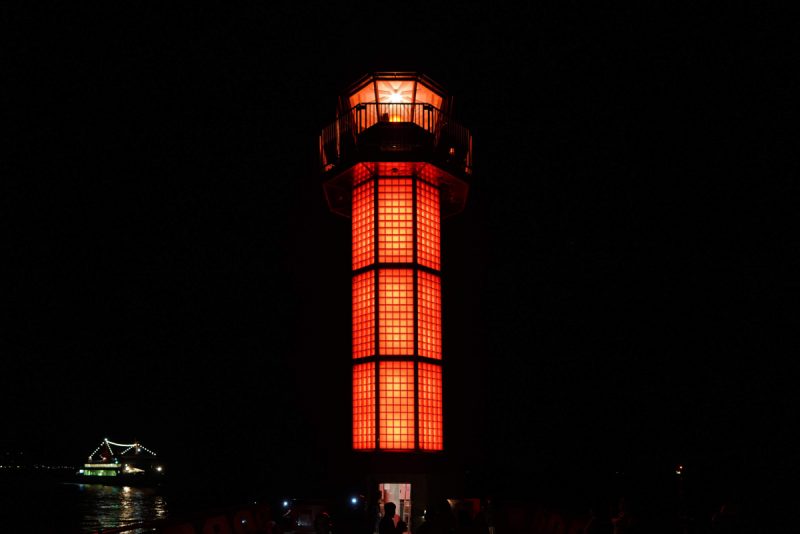
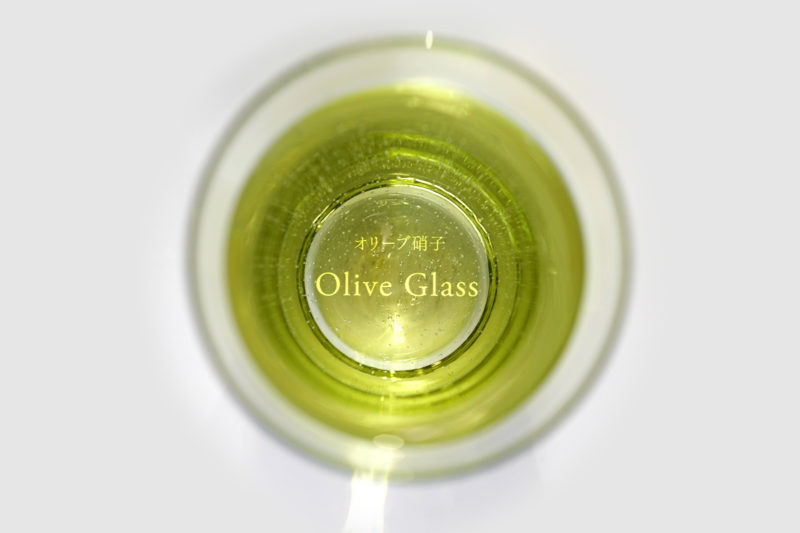
![【徳島】上勝町ゼロ・ウェイストセンター – [Tokushima] KAMIKATSU ZERO WASTE CENTER](https://yousakana.jp/wp-content/uploads/2020/12/KAMIKATSU-ZERO-WASTE-CENTER-800x533.jpg)
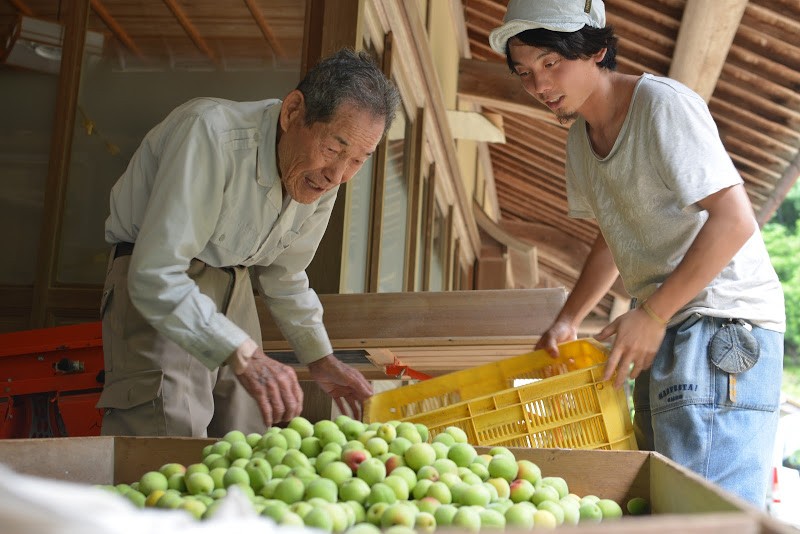
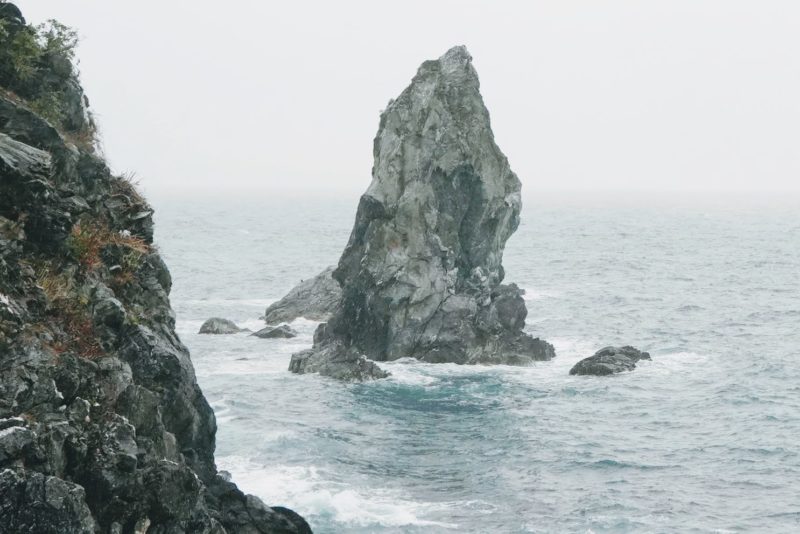
![【香川】マンゴー農園のフルーツカフェ「アンファーム」 – [Kagawa] Fruit Farmers’ Cafe “ANN FARM”](https://yousakana.jp/wp-content/uploads/2022/07/ann-farm_mitoyo-cafe-800x534.jpeg)
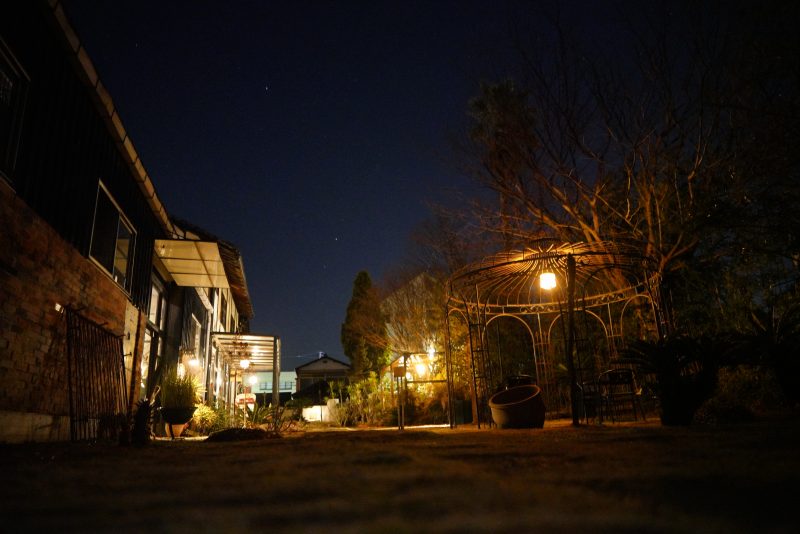
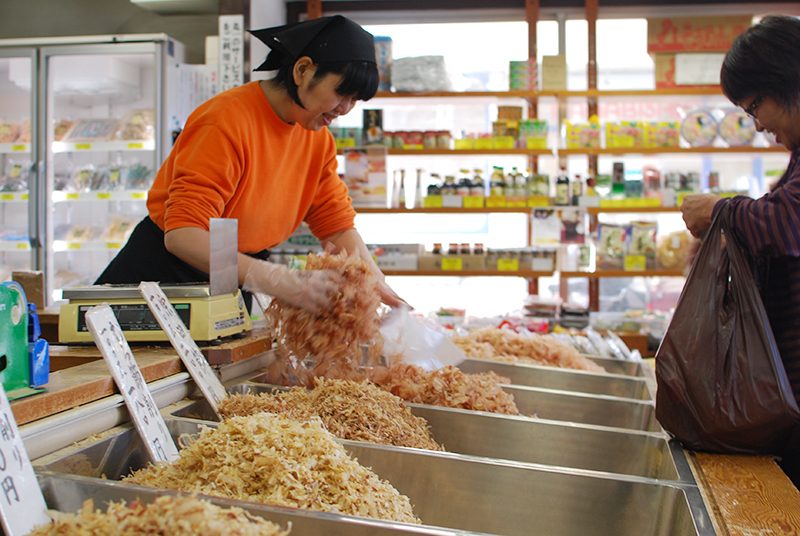
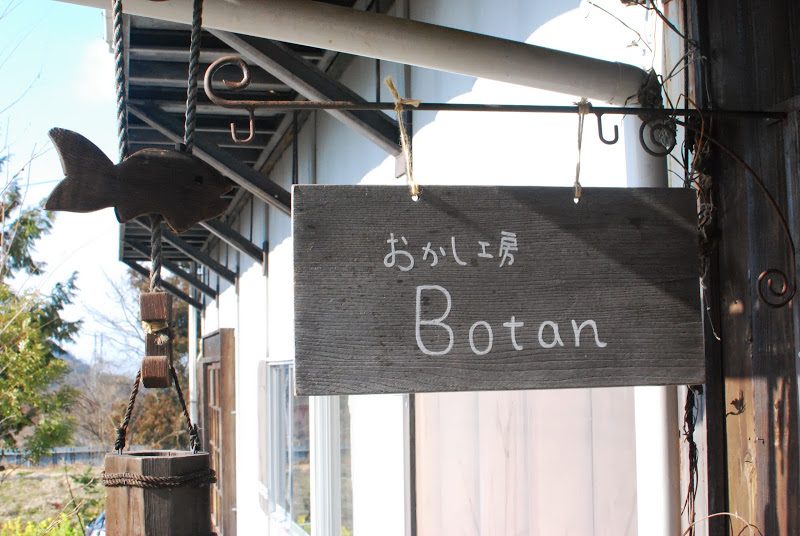
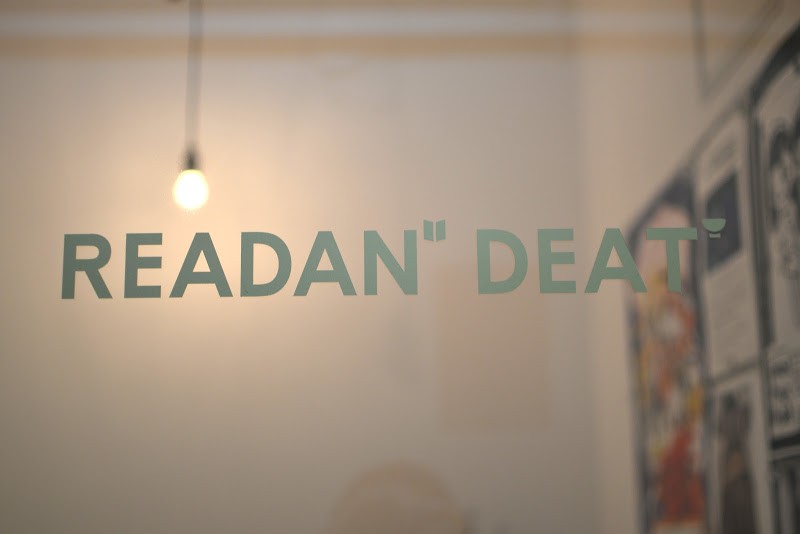
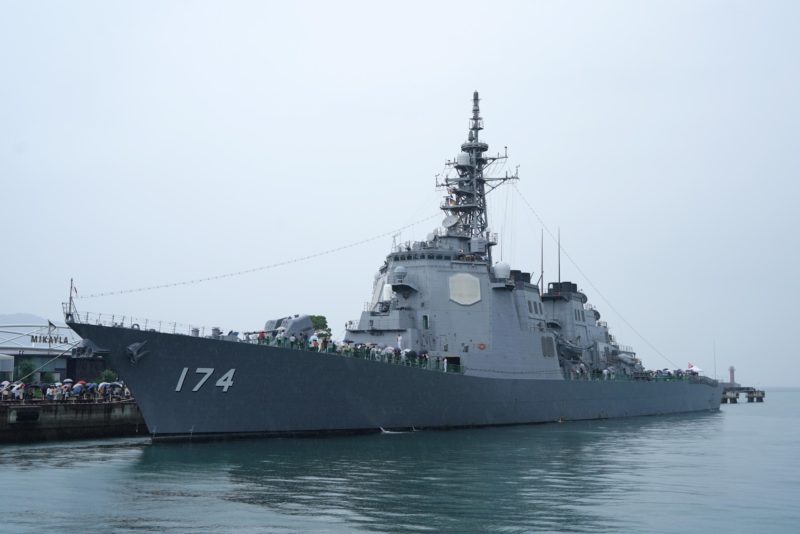
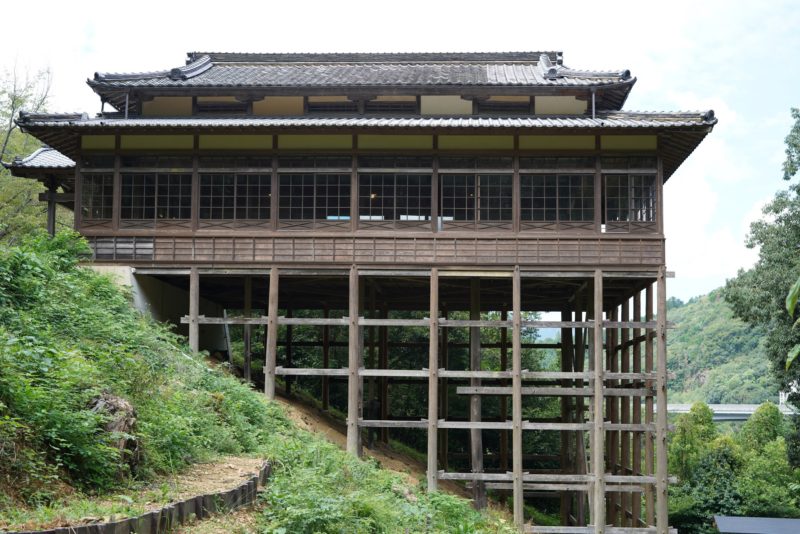
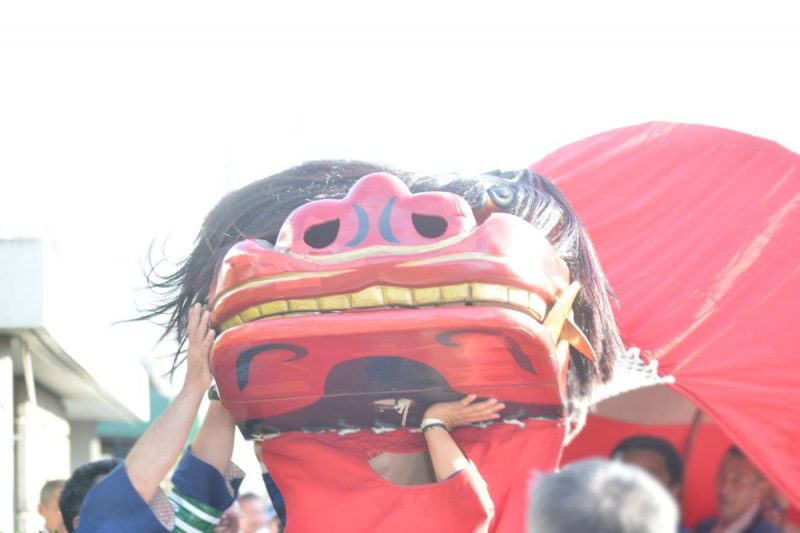
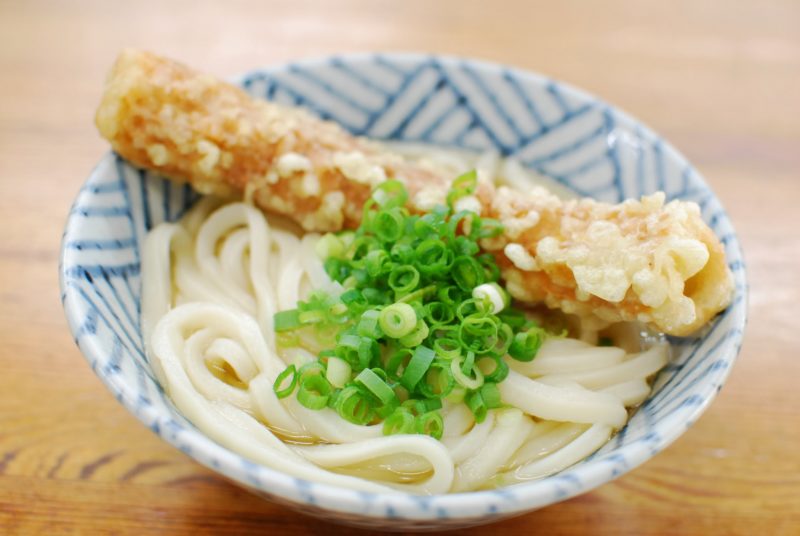
![【徳島】鮮魚のスモーク専門店『日和佐燻製工房』 – [Tokushima] Hiwasa Smokehouse](https://yousakana.jp/wp-content/uploads/2021/06/hiwasa-kunsei-koubou_hiwasa-smokehouse-800x533.jpeg)

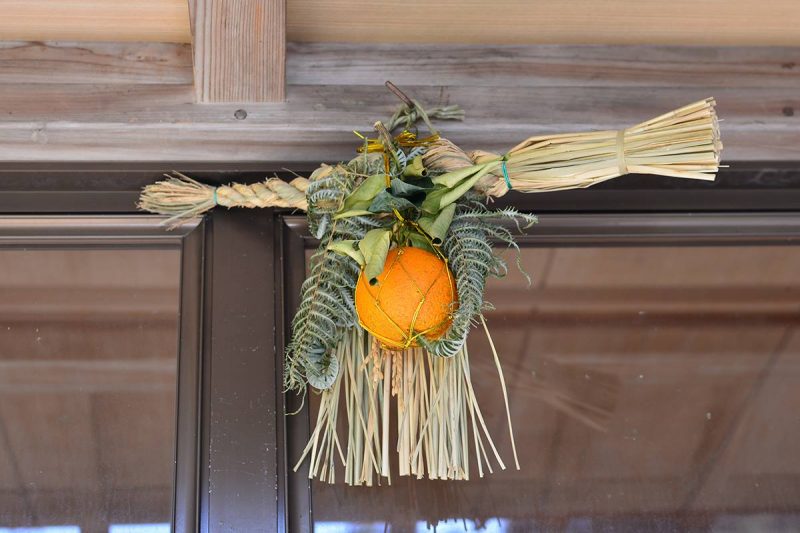

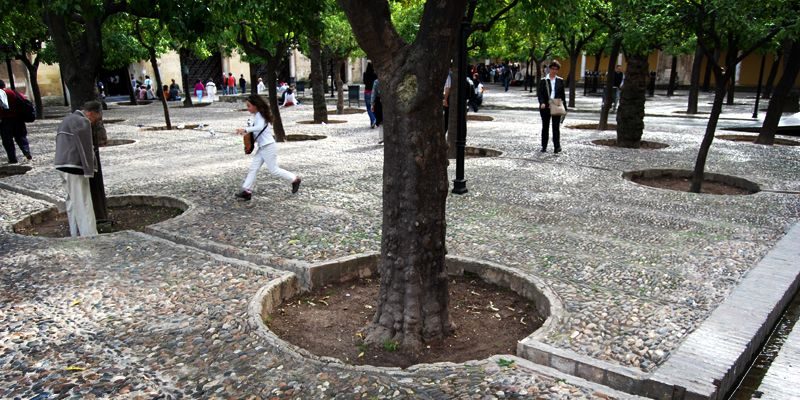
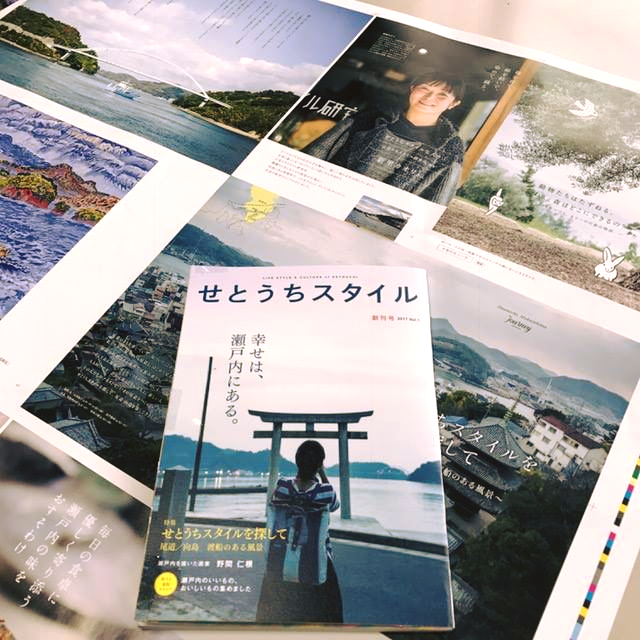
![【岡山】桃太郎伝説の鬼神・温羅の居城『鬼ノ城』 - [Oayama] "Kinojo Castle", the residence of Ura, the demon god of the Momotaro legend.](https://yousakana.jp/wp-content/uploads/2023/06/Kinojo-Castle_Oayama-973x649.jpeg)
コメントを残す